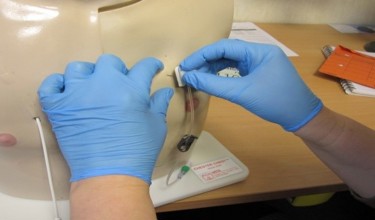A totally implanted port (port) is an implanted device comprised of a portal body and attaching catheter which are implanted under the skin and designed to provide repeated access to the venous system. The port is made of stainless steel, titanium or plastic that has a hollow reservoir with a latex septum and a side outlet that connects to a silicone or polyurethane catheter which will lie directly in one of the central veins.
The PowerPort* device is the first MRI safe port which is indicated for power injection when used with the PowerLoc* safety infusion set. It combines reliable venous access with the unique ability for power injected Contrast-Enhanced Computed Tomography (CECT) scans.
The main advantage of ports over other CVADS is that they are implanted and therefore, not external to the body. Ports can remain insitu for up to five years. Consequently, there is:
- less of an impact on patient’s body image as the port is not seen
- less risk of infection as the port is not exposed to life’s daily bacteria
- the ability to swim and bathe and allow more patient activity,
- no external dressing to the device
- no risk of accidental pulling/cutting of the device.

Figure 4: Portacath.






